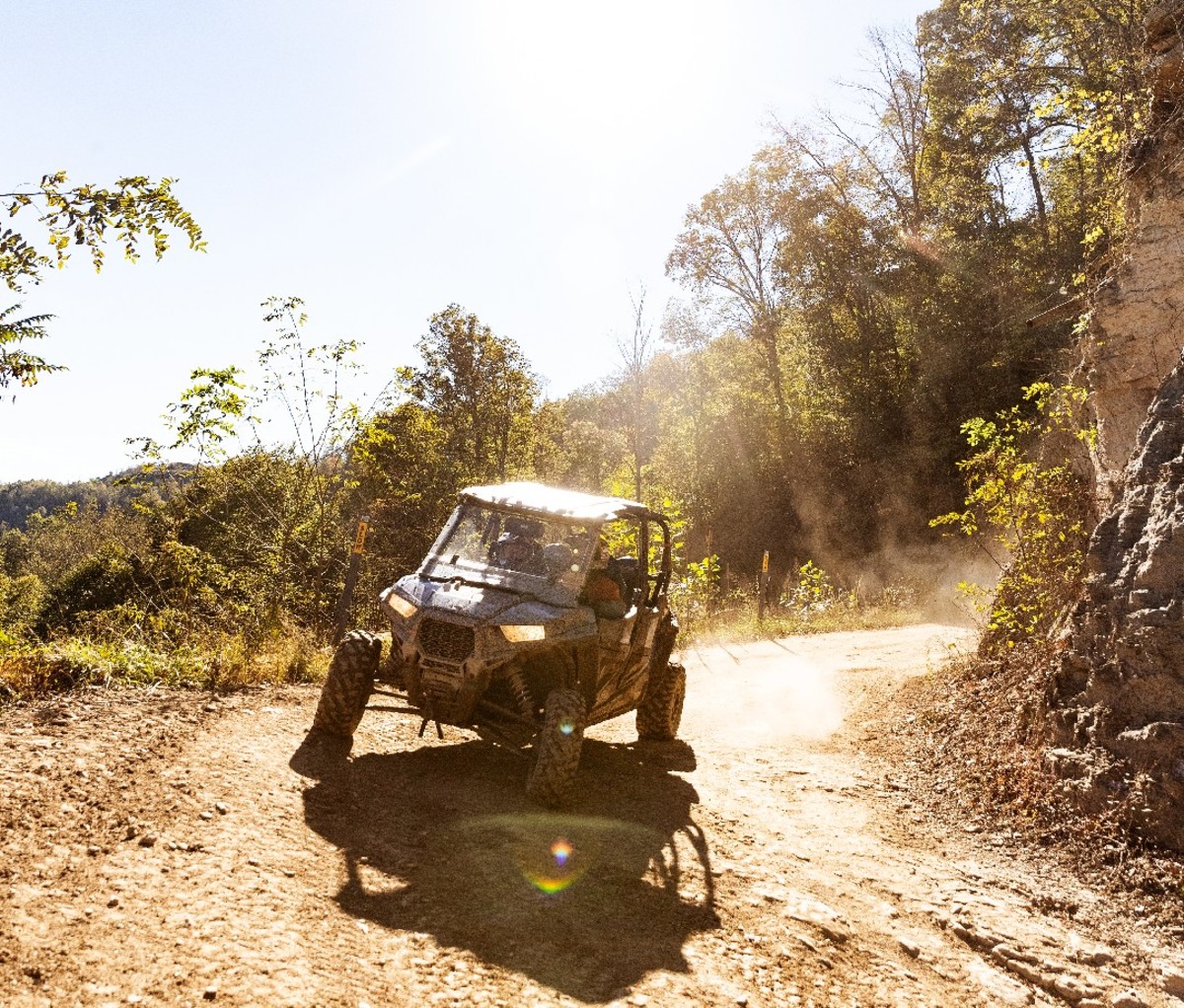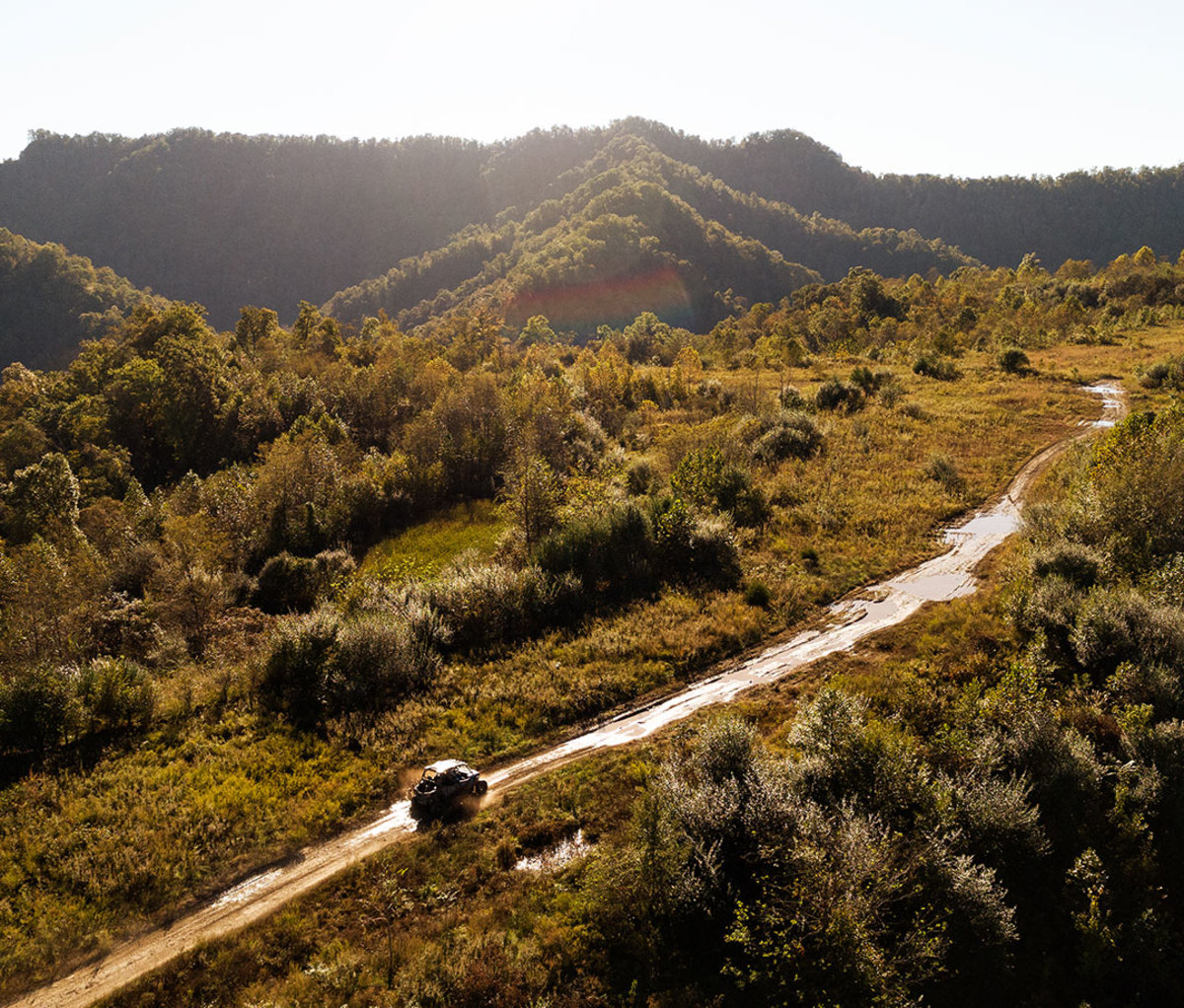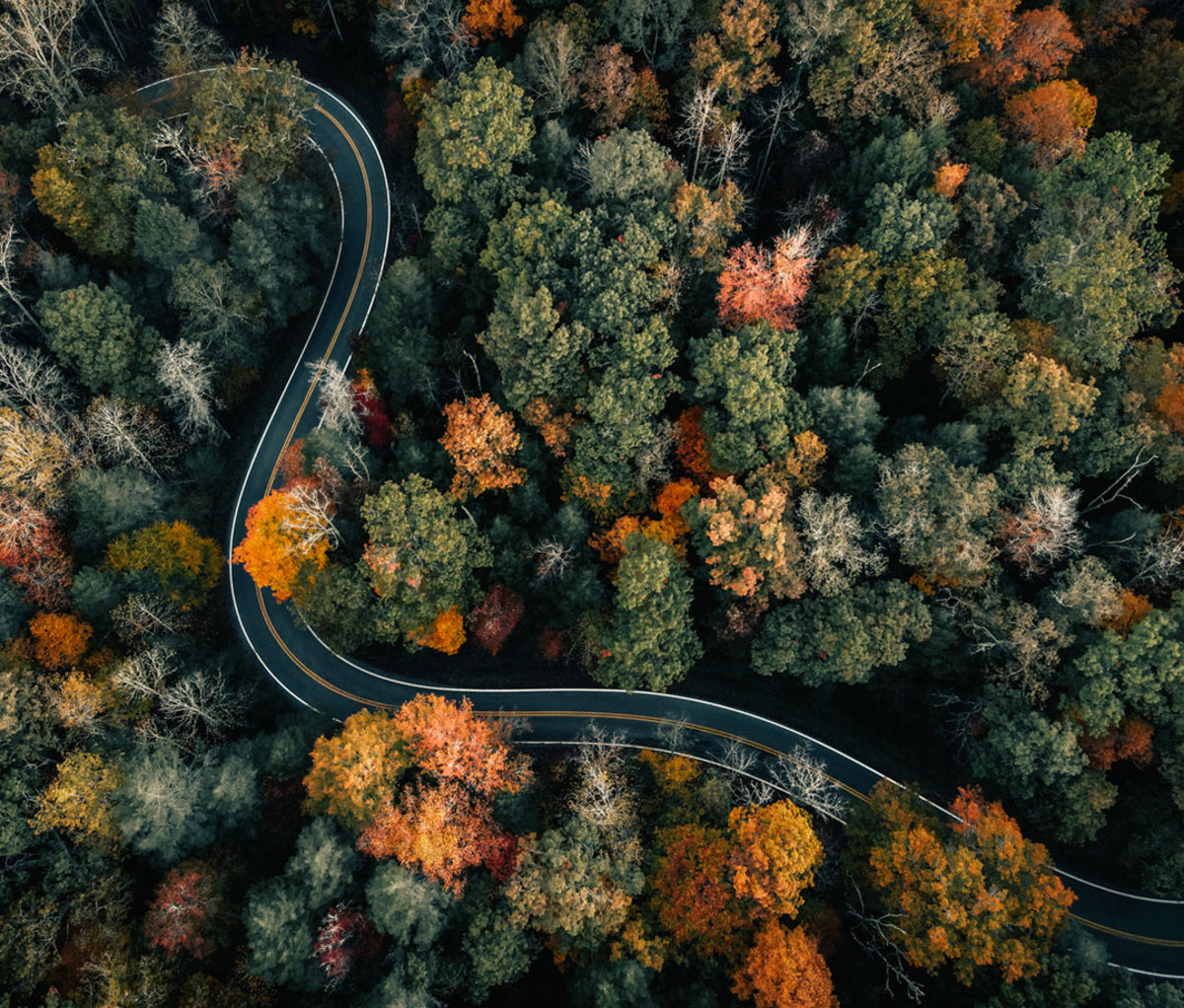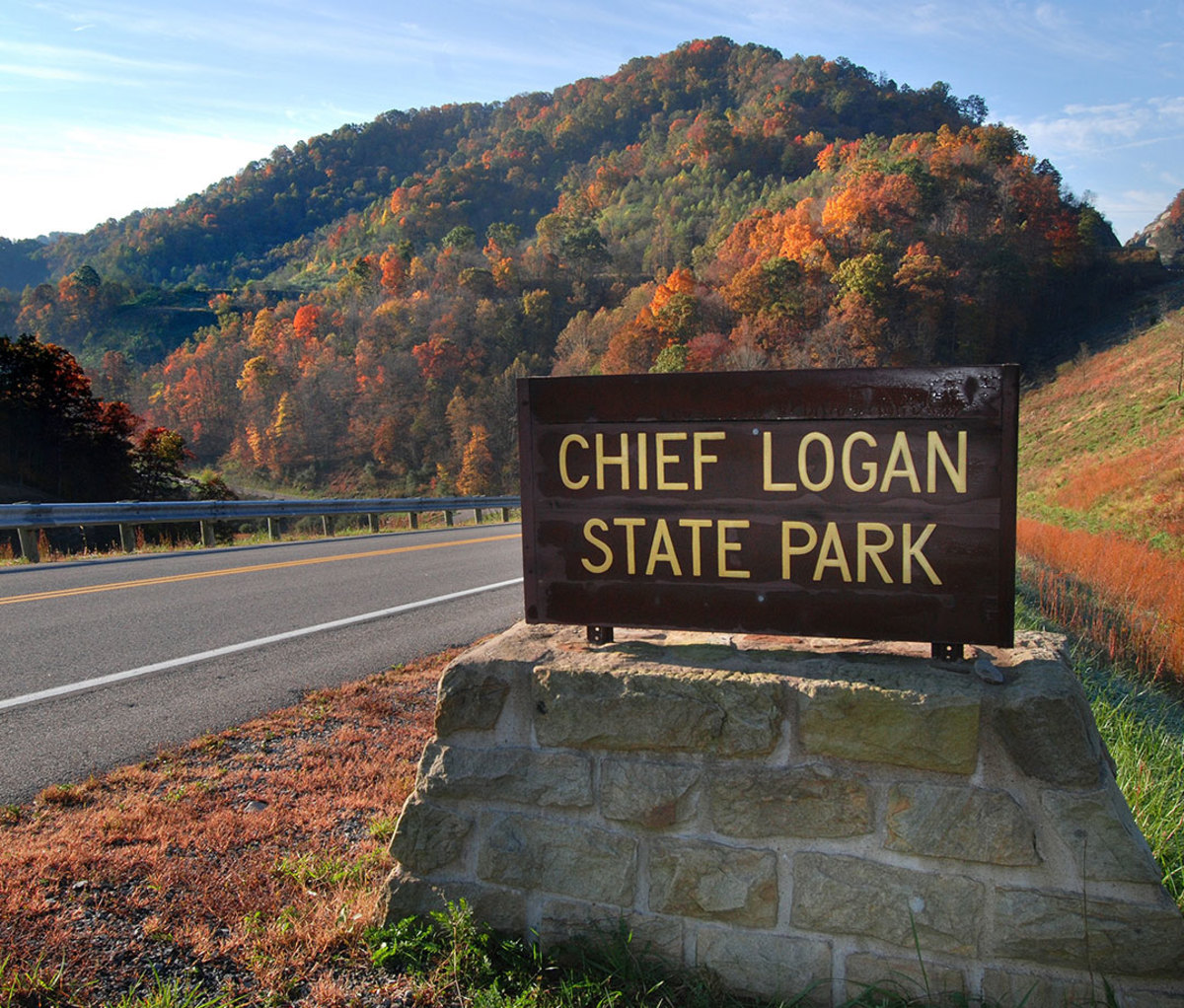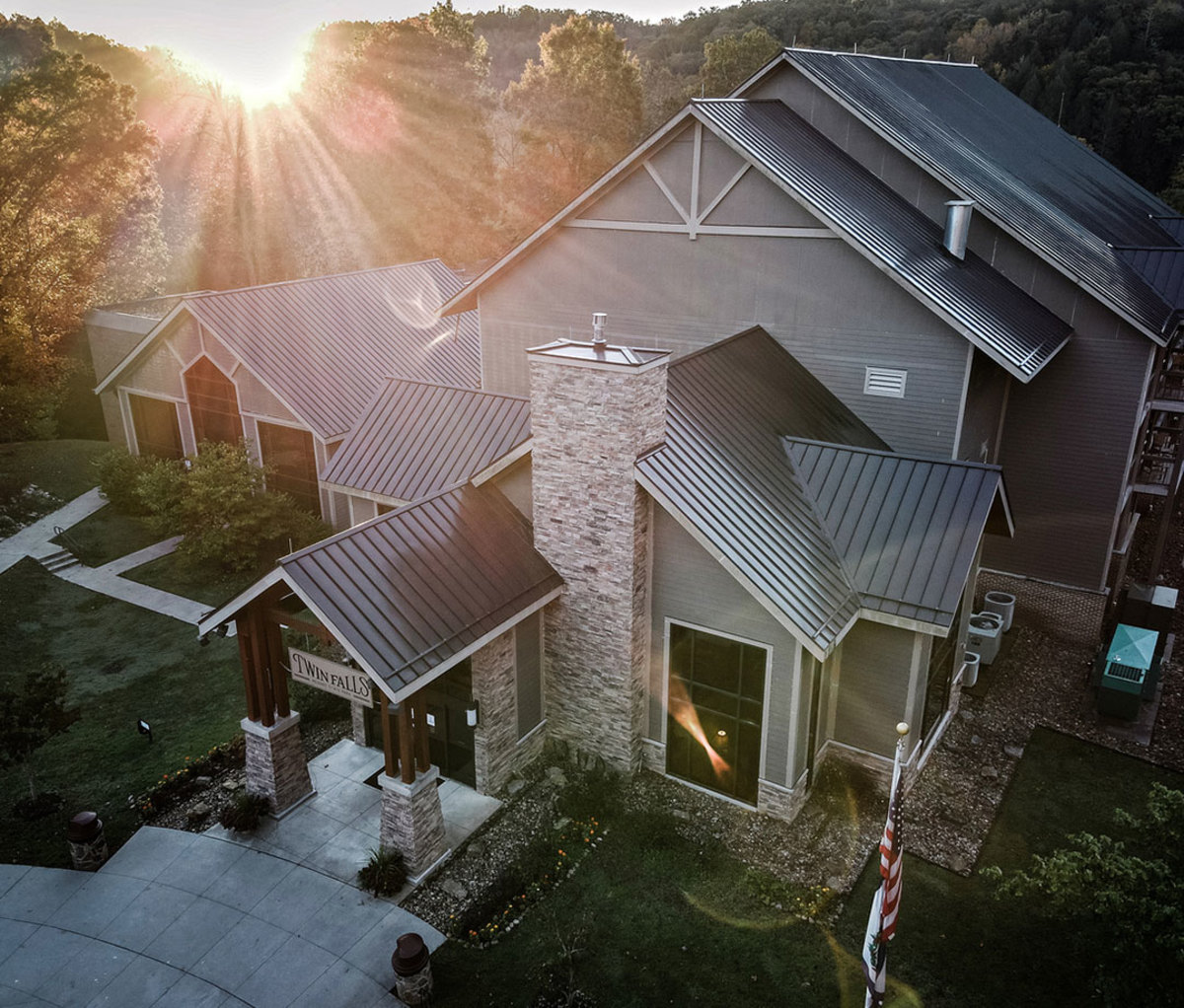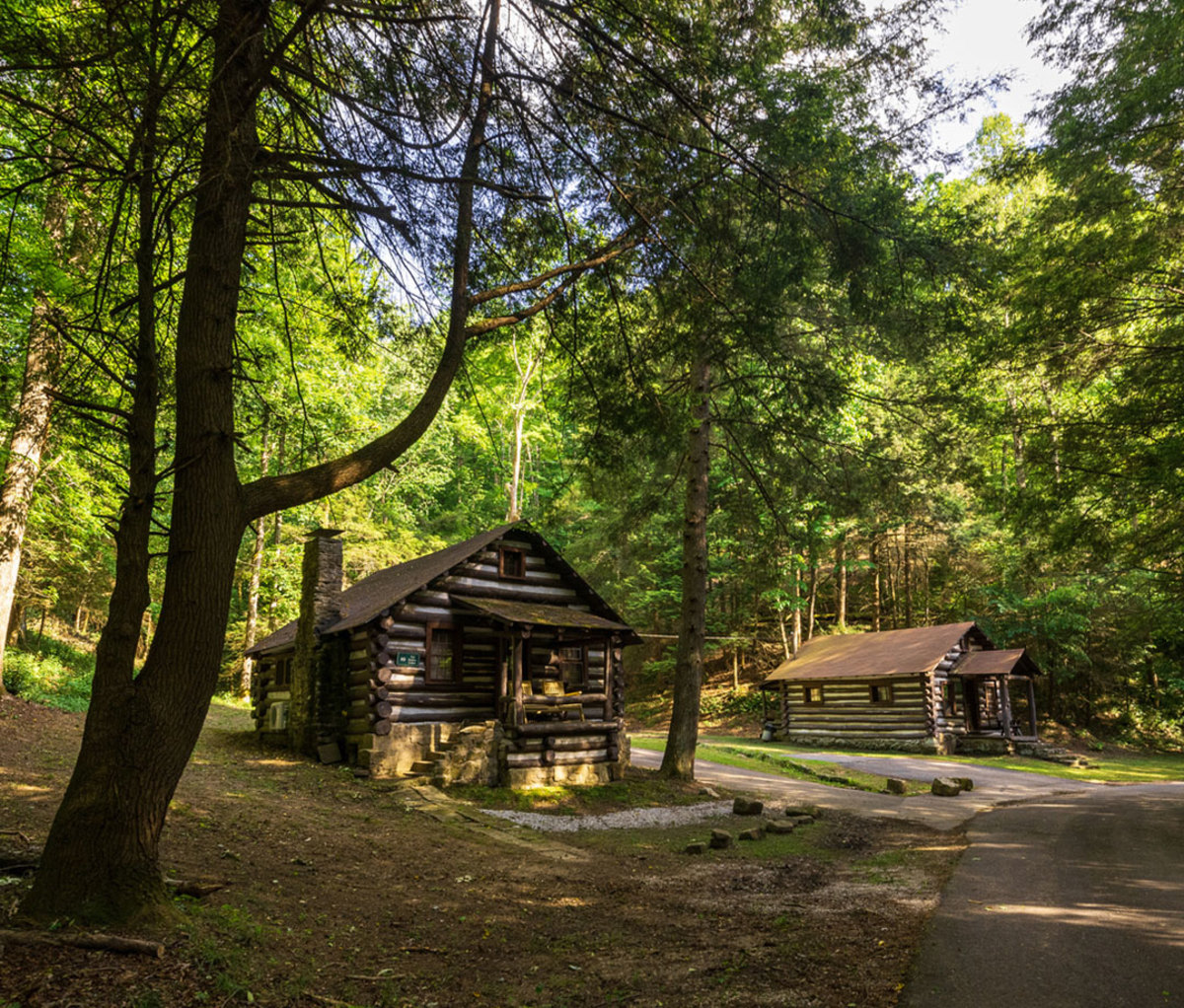ATV, UTV, SXS, 4WD… The world of off-roading loves its acronyms. This abundance of abbreviations works great in practice, but if you’re new to the scene chances are an explanation is in order on the two main types of four-wheeled vehicles: ATVs and SXSs.
Below we’ll take ‘er from the ground up, giving you a clear definition of each type of vehicle and how to tell them apart. While we’re at it, we’ll also explain the strengths and weaknesses of each variety, why you might choose one over the other, and what kind of rider is best suited to each machine.
What Is an ATV?
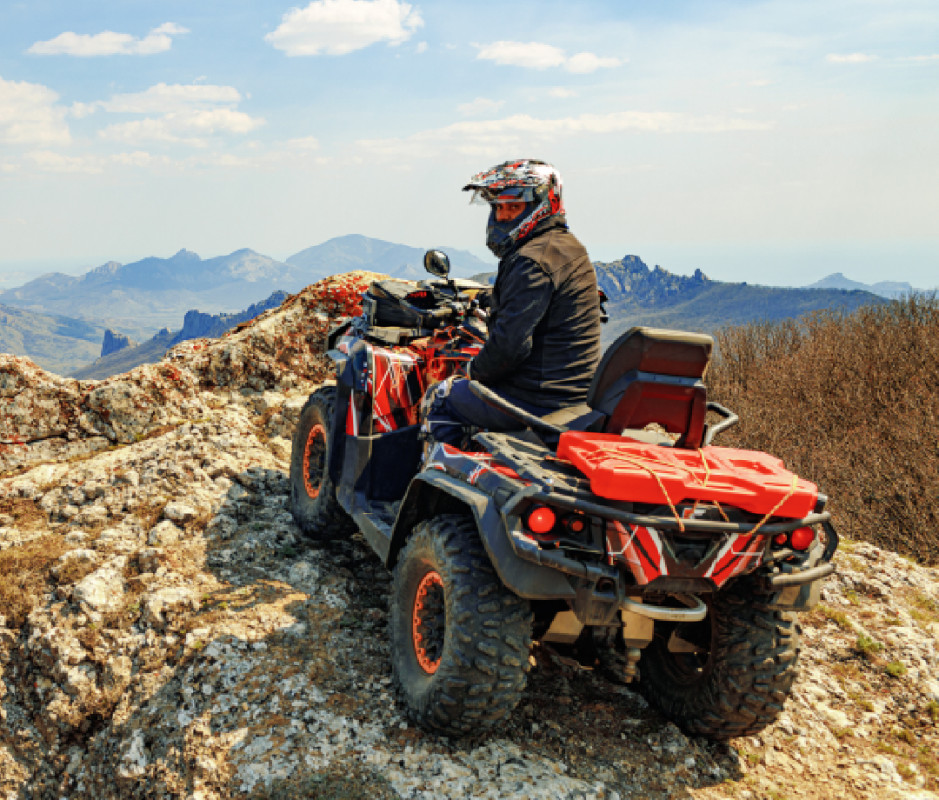
Getty
ATV (All-Terrain Vehicle): Put simply, an ATV is a four-wheeled vehicle that you sit on rather than in—straddling the seat with your legs and steering with handlebars, much like a motorcycle. Throttle and braking are also handled similarly to a motorcycle, typically via a handlebar-mounted throttle and a mixture of hand and foot braking. ATVs all have an open cockpit and sit either one or two people.
What Is an SXS?
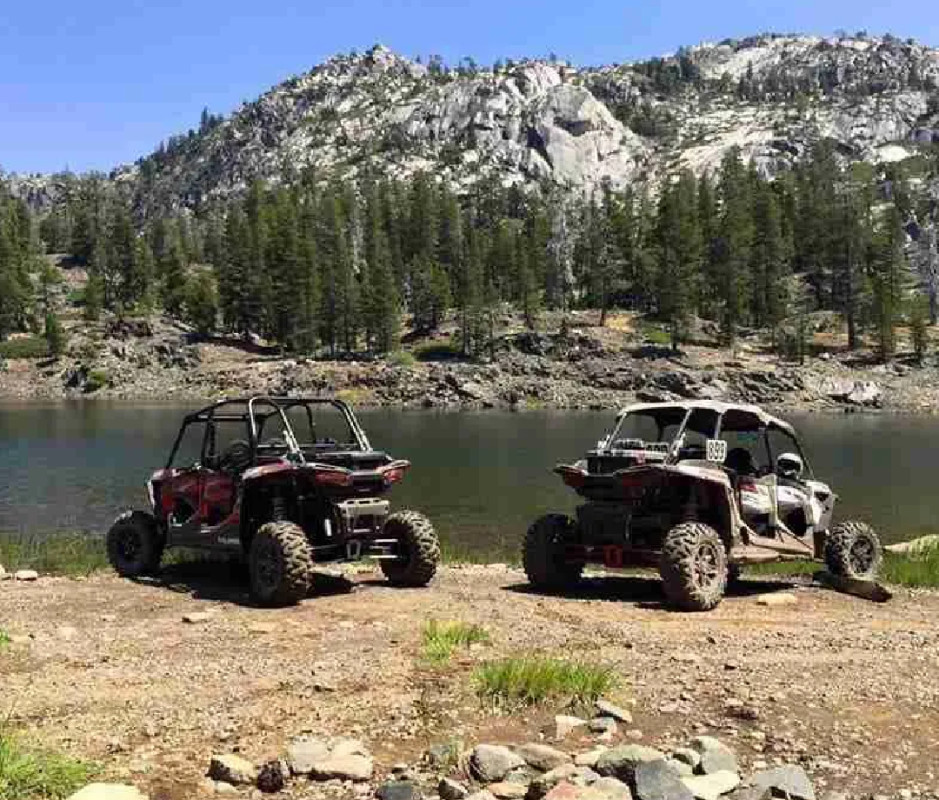
Courtesy Image
SXS (Side-by-Side): A side-by-side is a four-wheeled vehicle that you sit in rather than on, and operate with a steering wheel and foot controls just like a car or truck. These machines include roll cages or full enclosures (as well as seat belts), and seat between 1 and 5 people.
What About UTVs?
UTV (Utility Task Vehicle): UTV and SXS are often used interchangeably, but to be specific, UTVs are side-by-sides specifically designed for work, like hauling large payloads or towing heavy trailers. These vehicles typically include cargo beds for added storage and engines geared for low-town torque rather than outright speed.
Practical Distinctions Between ATVs and SXSs?
Now that we’ve clarified how to quickly tell these two apart (just look for a steering wheel), let’s explore the important practical distinctions between side-by-sides and their ATV cousins. There’s a night-and-day difference between how these two machines handle and perform, so here are the main things to be aware of if you’re in the market for one or the other.
Related: Best Off-Road Parks in America to Ride Side-by-Sides, UTVs
Side-by-Side (SXS): The Good
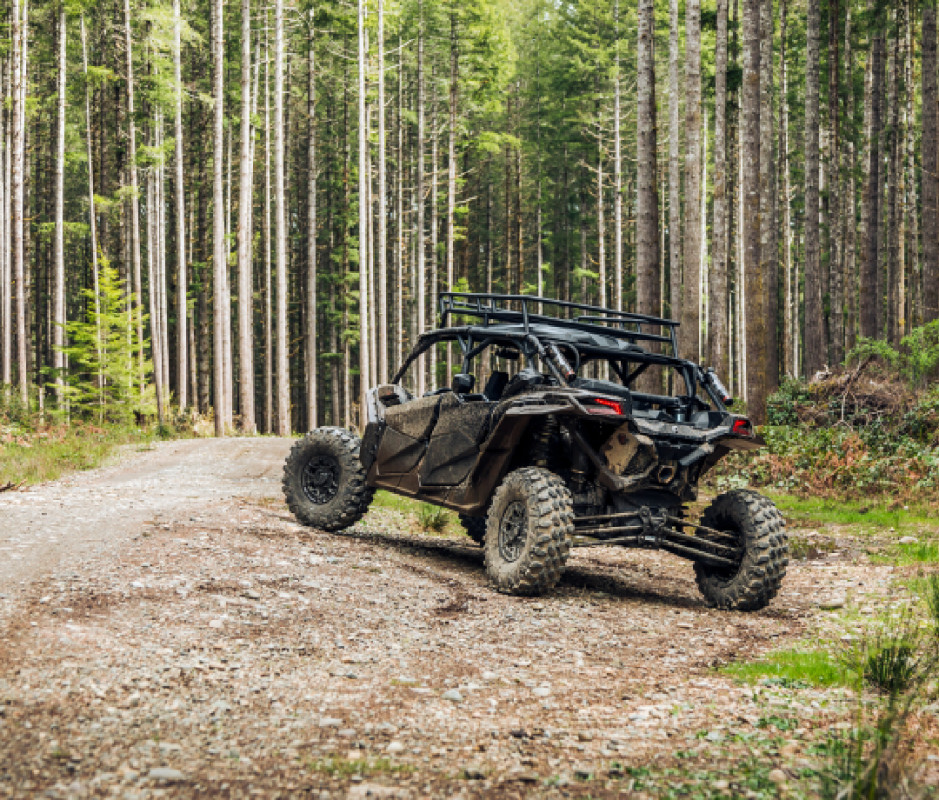
Getty
Unless you’ve got a million dollars to spend on a race-spec trophy truck, a side-by-side is by far the coolest and most capable way to get out and hit the dirt. This is arguably the most fun you can have with your clothes on, so here are a few of the biggest arguments in favor of the SXS.
Pro: Improved Safety and Stability
As the name suggests, modern side-by-sides are designed to sit two people side-by-side, and many also include back seats to sit an additional two or three passengers. As such, SXSs tend to be a good bit wider and longer than your typical ATV. This comes with some distinct advantages.
For starters, that longer and wider wheelbase makes side-by-sides feel much more stable and planted than ATVs, particularly when you’re moving along at a faster pace. This is especially true when riding up hills or around corners, as the “sit on top” layout of an ATV makes them feel more prone to rolling or flipping (which they are).
Don’t get us wrong—SXSs are still tall and top-heavy vehicles. We’ve seen quite a few side-by-sides flipped on their roofs over the years, but as a general rule of thumb, an SXS is more forgiving and easier to operate safely. There’s no need to worry about moving your weight around for balance or choosing between a front and rear brake. If you can drive a car, chances are you’ll feel reasonably confident behind the wheel of a side-by-side.
Pro: Better Utility
Side-by-sides are also much better suited to serious work duty, like farming, property management, or even construction. That’s because their longer wheelbases, more powerful engines, and beefier chassis are much more capable for towing and hauling heavy loads.
The first and most obvious point to make here is that utility-focused side-by-sides feature open cargo boxes just like the bed of a pickup truck, giving them more space to haul materials and gear without the need for a trailer. Most of these beds also include a convenient “dump” feature, meaning they can be unlocked and tipped back to drop heavy loads just like a dump truck.
As for towing, full-sized UTVs like the Polaris Ranger and Honda Pioneer offer much higher towing capacities than ATVs. The latest Ranger XD1500 is particularly impressive in this regard with a whopping 3,500 lbs towing capacity—rivaling some midsize pickup trucks.
Pro: Outrageous Performance
On the other end of the side-by-side spectrum, the latest sport-focused machines are blisteringly fast and unbelievably capable in rough terrain, even in stock form. Whether you’re interested in flat-out speed across an open desert or super-technical rock crawling on expert trails, there isn’t much a high-perfomance side-by-side can’t handle.
Consider Can-Am’s latest Maverick R, for example. We had the pleasure of taking one of these turbo-charged, 240 horsepower buggies for a joyride during last year’s Baja 1000, and we’re happy to report seeing speeds over 100 mph on the dash. Combine that with 25-plus inches of silky-smooth suspension travel, and you’ve basically got a miniature trophy truck anyone can run out and buy today.
Pro: Entertainment and Customization
Half the fun of getting a new toy is making it your own. If you’ve ever been to a large 4×4 gathering, you’ll know the off-road community takes this fact more seriously than most. When it comes to customization, side-by-sides reign supreme.
The sky is truly the limit here. Most SXSs come with some kind of Bluetooth audio from the factory, but that’s just the tip of the iceberg of what’s possible. Whether you want to turn your rig into a squeaky-clean, color-matched custom or a hardcore race buggy that’s built to conquer Baja, the aftermarket has a solution. Bright lights, loud exhausts, 10 speaker sound systems… If you can imagine it, it’s for sale out there somewhere.
Related: The Best Bottles of Campfire Whiskey Worth Stashing in Your Pack
Side-By-Side (SXS): The Bad
While the larger chassis and intuitive operation of an SXS clearly has its perks, it ain’t all roses either. The additional size and complexity of a side-by-side comes with a few drawbacks you’ll want to keep in mind.
Con: Performance Ain’t Cheap
Side-by-sides are the clear winner when it comes to capability and refinement, but with added performance comes added cost. Consider Can-Am’s current lineup for example: The brand’s least expensive side-by-side, the Defender, will set you back about $13,000, while their entry-level ATV, the Outlander, comes in well under $7,000.
Both of those rigs are built for basic utility, however, and the difference in price skyrockets if speed is what you’re after. Can-Am’s top-of-the-line sport ATV, the Renegade, is by no means cheap, but it still costs considerably less than a base-model sport side-by-side. You can expect to spend around $20,000 for a Renegade with all the bells and whistles, while that Maverick R we mentioned above can easily lighten your wallet to the tune of $60,000 when fully optioned-out.
Con: Storage and Logistics
Cost aside, there’s another major headache that comes with owning a side-by-side. Because these machines are so much larger than an ATV, hauling one in the bed of a pickup truck is pretty much out of the question.
There are exceptions to the rule here, of course, but for anything other than the smallest UTVs, you’re going to need a trailer to haul it around. It’s also important to note that side-by-side vehicles often weigh well over 2,000 pounds, so you’ll need a pretty rugged trailer and a vehicle that’s powerful enough to pull it.
Finally, you’ll need a big enough place to store everything to keep it out of the weather and safe from theft. If you’ve got a dream garage with room to spare you’re all set, but for many owners this means paying a monthly fee to use a secure “park-a-toy” storage facility.
Con: Fewer Options For Recreation
Another major downside many new side-by-side owners overlook is that their new rigs simply aren’t allowed on a large percentage of recreational trails due to their wide footprint. This varies state-by-state, but most public, off-road riding areas enforce a cutoff of 50 inches wheel-to-wheel for their ATV and dirt bike trails, limiting SXSs to privately owned off-road parks and existing 4×4 routes used by Jeeps and overlanding vehicles.
All-Terrain Vehicle (ATV): The Good
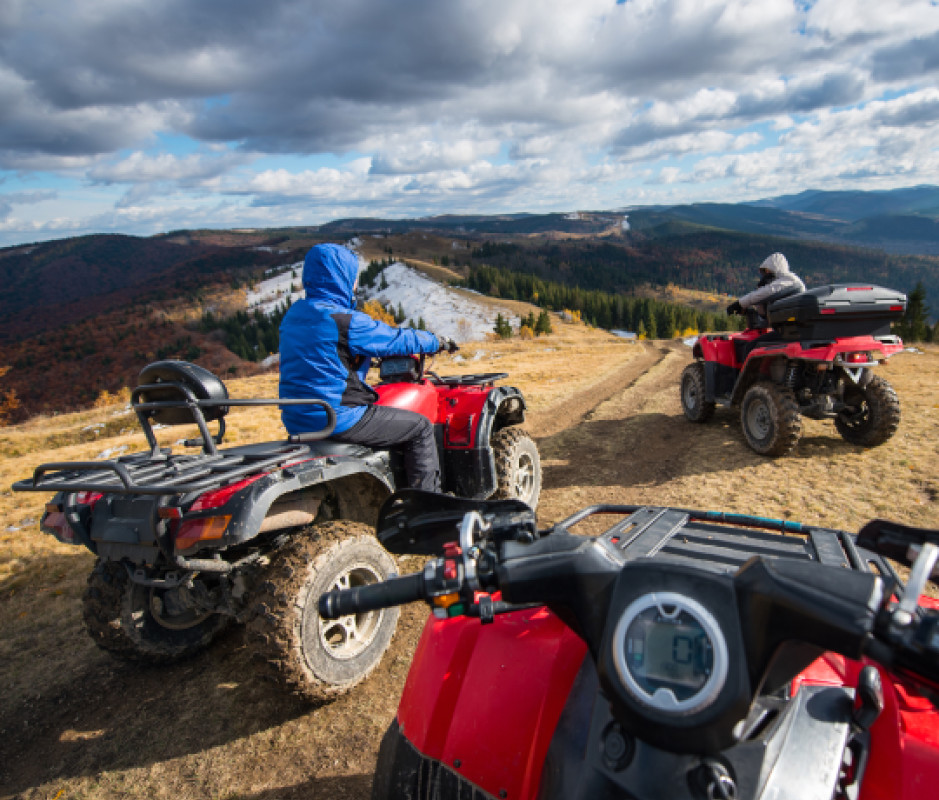
Getty
While side-by-sides seem to dominate on paper, there’s still a strong argument to be made for ATVs. These compact off-roaders are still plenty fun and useful in many cases. Here are the main talking points to consider if you’re weighing one over the other.
Pro: ATVs Go Places Side-by-Sides Can’t
As alluded to above, many trail systems across the country aren’t open to side-by-side owners. ATVs, on the other hand, have a much narrower footprint that’s easier on the environment, granting them access to thousands of miles of trails you’ll never get to experience behind the wheel of an SXS.
In addition to regulatory restrictions like these, it’s also worth pointing out that the shorter and narrower wheelbases of ATVs do much better on narrower trail systems. Many tighter, slower turns are simply too sharp for a side-by-side to maneuver around, especially when there are trees and other obstacles lining the sides of the path.
Pro: Bang For Your Buck
We’ve established that an ATV is a much more budget-friendly way to explore off road, but it’s important to emphasize just how affordable these machines can be. Entry-level ATVs like the Kawasaki Brute Force, Honda Fourtrax, and Arctic Cat Alterra all deliver respectable performance and proven reliability while retailing for around $5,000.
If a general purpose off-road machine is what you’re after and you don’t need to haul heavy loads or carry extra passengers, chances are even a base-model ATV may be overkill. Most modern ATVs pack a serious punch when it comes to utility work, as many models can tow well over 1,000 pounds with ease.
Pro: Storage and Transportation
Put simply, just about every ATV on the market can be hauled in the bed of just about any pickup truck. This includes midsize trucks like a Ford Ranger or Toyota Tacoma, and even applies to short bed models. All you need is a good set of ramps and a few ratchet straps and you’re ready to ride out to the trail.
If off-roading is a family affair for you, hauling multiple ATVs side-by-side in a single trailer is a common practice. The lower weight of an ATV also makes them easier to haul with a smaller pickup, so if you’re working with a base-model four-cylinder rather than a big gnarly diesel, hauling an ATV is well within your towing or payload capacity.
Lastly, the compact dimensions of an ATV take up far less space in the garage than an SXS, making them much easier to store when not in use. Most owners can wedge two or three ATVs into a single garage space, so paying to store them out of the weather is typically a non-issue.
Related: A Few of the Best Places in California to Learn Overland Motorcycle Riding
All-Terrain Vehicle (ATV): The Bad
There’s no denying ATVs are a convenient and cost effective way to explore off-road. They’ve also got their shortcomings. Here’s what we’ve learned from our own experience over the years.
Con: Safety Concerns
All power sports are fun, and they all come with some degree of risk. We wouldn’t have it any other way, but ATVs can be riskier than most, especially compared to side-by-sides.
Because of their shorter wheelbases and top-heavy nature, ATVs are much more prone to body roll when cornering, especially when speed is a factor. This is a non-issue if you’re just putting around your local trails or hauling gear through the backwoods, but in our experience speed is seductive and self-control has its limits.
This increased roll-over hazard is further complicated by the open-air design of an ATV. With no roll-cage to protect you and no seat-belt to keep you strapped in, having your ATV roll on top of you in a crash is an all-too-common occurrence.
Con: The Passenger Experience
Most ATVs are designed to fit a rider up front and a passenger on the back. While many ATVs nowadays include optional back seat rests and other creature comforts for passengers, riding on the back of one for any length of time isn’t particularly enjoyable.
That’s because unlike side-by-sides, which provide passengers the same view, legroom, and support as the driver, being on the back of an ATV means having the back of someone’s head in your face at all times. We’ll also note that passengers tend to prefer having seat belts, grab handles, and the peace of mind of a roll cage—especially when the driver has a need for speed.
Lastly, there’s a comparative lack of creature comforts on most ATVs. Bluetooth audio, fully-enclosed cabs, and even heaters and AC are common equipment on factory side-by-sides nowadays. Some ATVs are offered with accessories like audio or windshields for the driver, but side-by-sides are tough to beat from a comfort standpoint.
So Which Off-Roader Is Right For You?
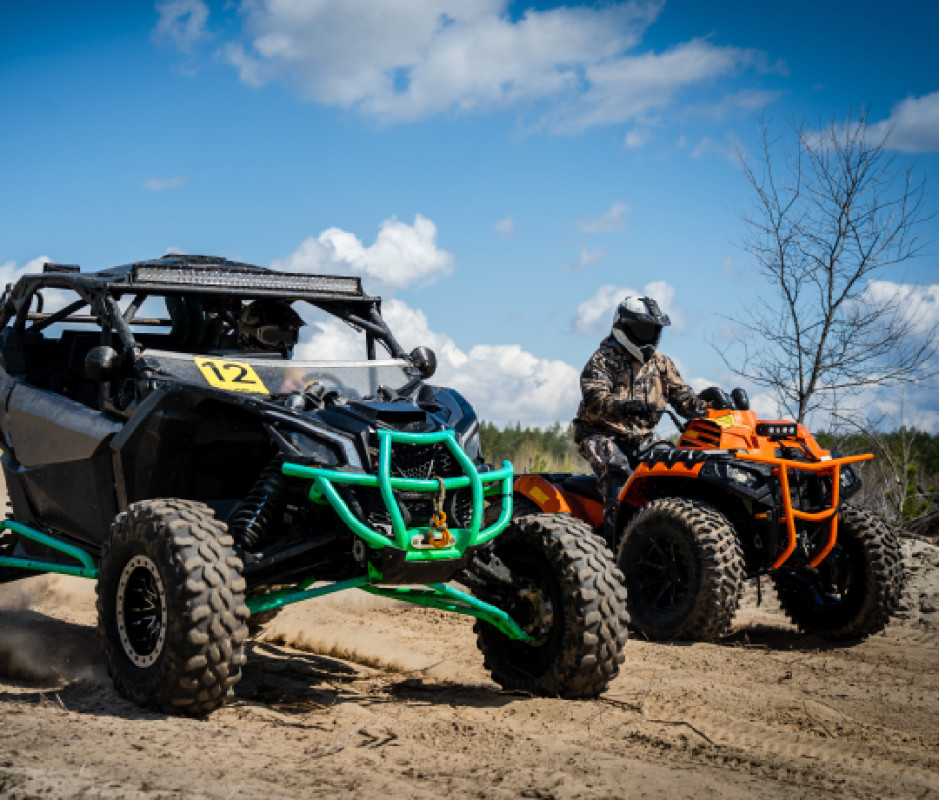
Getty
We’ll be blunt here: If you’ve got the money to spend, room in the garage, and enough areas to ride within striking distance, side-by-sides take the cake by a long shot. They work harder, go faster, and are more fun to drive than anything else in the dirt.
That said, practicality and affordability are both necessary evils for most of us—and, truth be told, side-by-sides aren’t always the best tool for the job. For narrower trails, basic utility, and lighter work (alongside tighter budgets), ATVs are often a better fit—which is why they’re still the weapon of choice for many backcountry hunters, land owners, and casual trail riders.
